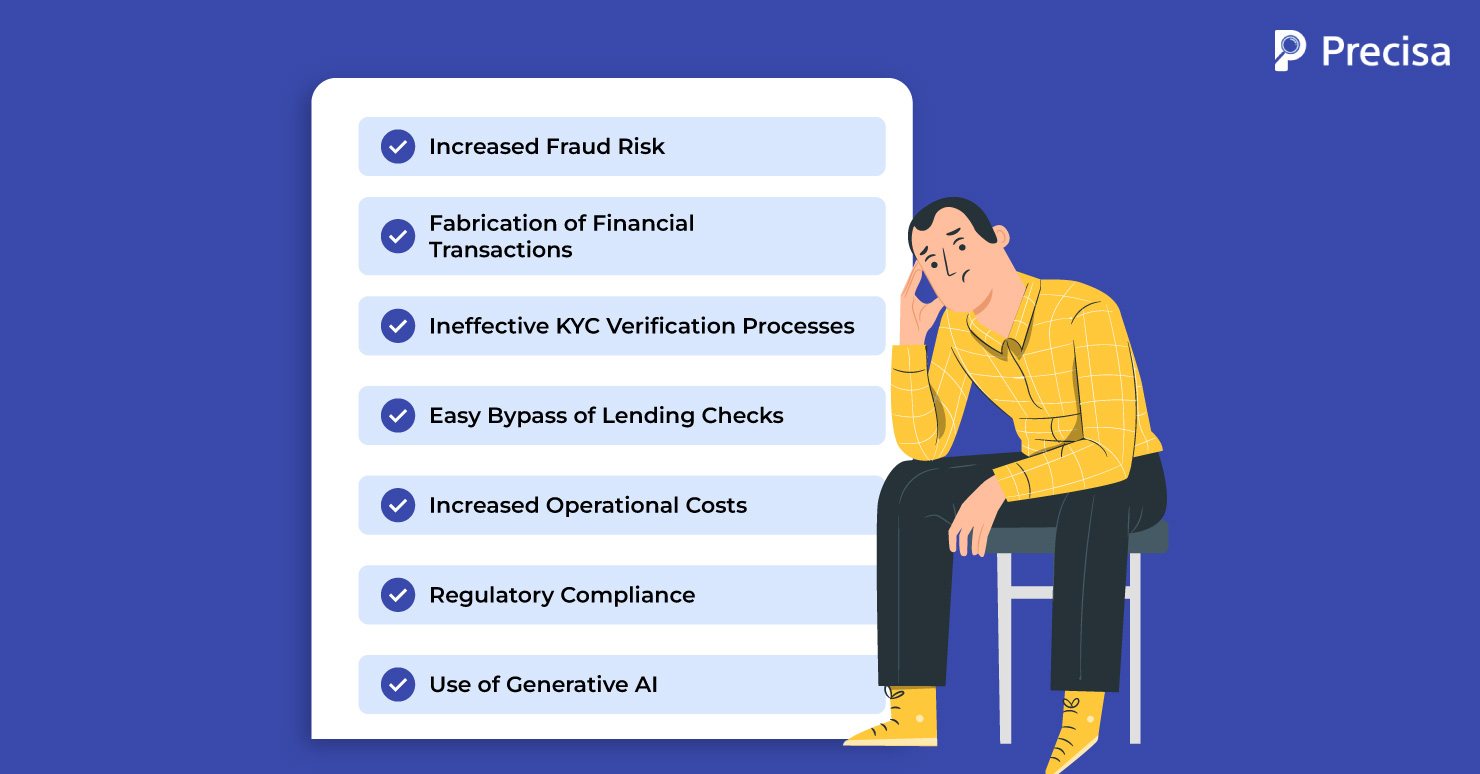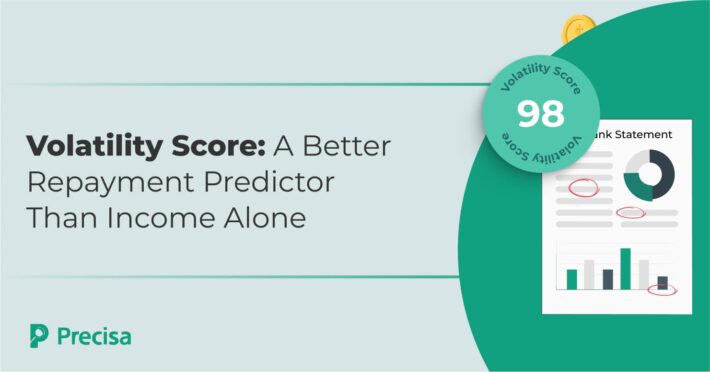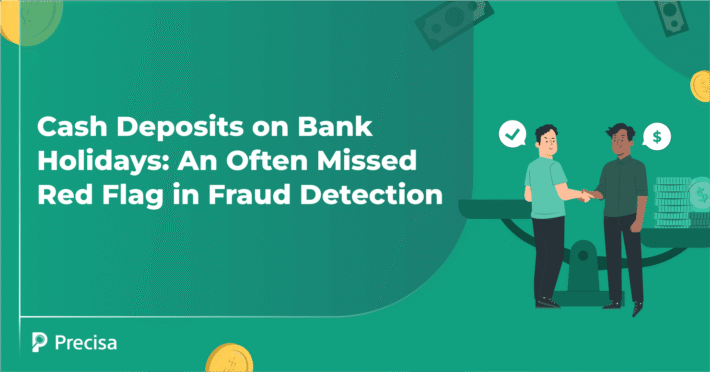The Rise of Money Mules in Lending: What You Need to Know

Recently, cybercrime authorities froze approximately 450,000 suspected mule bank accounts. The State Bank of India reported nearly 40,000 detected cases, making it a primary target.
As digital transactions surge and fraud tactics become increasingly sophisticated, vulnerabilities in how banks verify new accounts are laid bare. This is why lenders need to understand how money mules operate and their impact on lending institutions.
This blog post discusses the impact of money mules and reveals how bank statement analysis can help lenders identify and prevent fraudulent transactions.
What are Money Mules?
Money mules are individuals who (knowingly or unknowingly) transfer money on behalf of fraudsters, popularly known as money launderers.
The syndicated crime rings recruit individuals, often unsuspecting, through various schemes, such as quick income or fake job offers, to transfer stolen or illegal money elsewhere via their bank accounts.
In India, these money mule accounts are often used to facilitate the laundering of funds obtained through cyber crimes, contributing to an estimated loss of ₹17,000 crore (approximately $2 billion).
According to a 2024 report by the behavioural biometrics company BioCatch, 9 out of every 10 mule accounts initially went undetected. Also, a VarIndia report notes that:
- While 86% of the first sessions of documented mule account activity originated from within India, this figure dropped significantly over time.
- Cities like Bhubaneswar account for 15% of mule activity, with Lucknow and Navi Mumbai each contributing 3.4%.
- The RBI has called for enhanced monitoring and preventive measures to combat this growing threat, emphasising the need for banks to improve their detection capabilities and raise customer awareness.
Three Types of Money Mules
According to Nasdaq’s global financial crime report, money mules are fueling a massive $3.1 trillion money laundering problem. They are categorised into three types:
- Innocent money mules: Individuals unaware of their involvement in money laundering, often motivated by trust in a purported job opportunity or romantic relationship.
- Witting money mules: Individuals who probably know that their bank account is being used in suspicious activity yet engage in it anyway. They are motivated by extra income.
- Complicit money mules: Individuals who have definite roles in money laundering and actively participate in the process. They open multiple bank accounts in different countries and may even advertise their services to crime groups.
7 Ways Money Mules are Exploiting the Lending Ecosystem
Money mules pose the following challenges for lending institutions:
Increased Fraud Risk
Money mules serve as a conduit for illicit money laundering, complicating fraud detection. A report found that 55% of banking sessions were operated by third parties, indicating many account holders are unaware their accounts are compromised.
Fabrication of Financial Transactions
Imposters use mule account transactions to create a false sense of financial stability in bank statements. This could be anywhere from inflating account balances to showing fake income streams.
Ineffective KYC Verification Processes
While KYC protocols are essential, most lenders fail to verify the documents against the mule accounts detected in the past. Without a comprehensive KYC process, fraudsters have learned to evade checks without raising red flags.
Easy Bypass of Lending Checks
With conventional bank statements and GSTR verification methods, identifying anomalies in transaction patterns takes time and effort. Money mules take advantage of these gaps to successfully bypass initial scrutiny.
Increased Operational Costs
Traditional transaction or loan management systems are limited by their reactive nature, only catching fraud after it happens. This gap increases operational costs for investigating illegal activities.
Regulatory Compliance
Lenders need to adhere to anti-money laundering (AML) regulations set by regulatory bodies. Engaging in transactions involving money mules can lead to severe consequences, including fines and legal liabilities.
Use of Generative AI
According to the WEF, Generative AI, while revolutionary in many sectors, has become a double-edged sword for lenders. Fraudsters are now leveraging this technology to create fake identities and find new ways to exploit vulnerabilities in security measures.
How Lenders Can Protect Themselves Against Money Mules
Indian banks and MSMEs face greater challenges in detecting mule accounts during onboarding since they are registered by lawful Indian citizens who later sell access to these legitimate accounts. This differs from the USA and Australia, where mule accounts typically use fake identities.
Here are three measures lenders can use to fight against money mules:
1. Strengthen Lending Processes
Implement innovative KYC (Know Your Customer) protocols to spot potential mule accounts before they become problematic.
2. Leverage Analytics for Detecting Red Flags
Financial data and transaction analytics tools can aid in mule account detection by streamlining bank statement analysis. Precisa’s key features, like ‘Volatility Score’ and ‘Precisa Score’, help lenders quickly identify irregular activities.
3. Educate Consumers and Train Staff
Raise awareness about money mule risks and illegal schemes that target borrowers looking for quick financial gains. Strengthen security through staff training on recognising suspicious transaction patterns and financial red flags.
4. Use Link Analysis
Instead of focusing on individual mule accounts, aim at uncovering mule networks through link analysis. This includes tracking various points, like fund transfers, shared devices, and IP addresses.
Mule Account Detection: The Role of Precisa’s Cloud-Based Data Analytics with Intelligent Automation
Precisa is changing the way lenders analyse and process bank statements with its cloud-based financial data analytics solution:
- Pattern Detection: It can flag unusual activities early by analysing transaction patterns and user behaviours in real time.
- Behavioural Analysis: Precisa monitors online banking sessions, looking for irregularities such as suspicious eStatements, RTGS transactions below ₹2,00,000, negative computed balance, and geographic inconsistencies.
- Precisa Score: The Precisa Score provides a complete loan repayment probability, factoring in suspicious financial activities that could be linked to money laundering.
- Data Aggregation: The account aggregator connector aggregates data from various sources to deliver a comprehensive view of financial behaviours.
- Intelligent Automation: With intelligent automation, Precisa streamlines the analysis process from a couple of days to a few minutes, allowing lenders to focus on faster decision-making.
- Advanced Integration Capabilities: The solution can be integrated with existing loan origination management systems through APIs. This enables real-time data analytics and fraud detection.
The Way Forward
Money mules are helping international crime networks steal money from people and businesses, making it impossible for financial institutions to track them. While regulators and banks are serious about it, they should not look at the solutions purely from a compliance perspective.
With scams getting more sophisticated, the only way of mitigating the risks is by implementing a robust ecosystem with Precisa. Its data analytics improve detection capabilities through real-time pattern recognition and behavioural analysis, enabling quicker identification of suspicious activities.
Request a free demo today!




